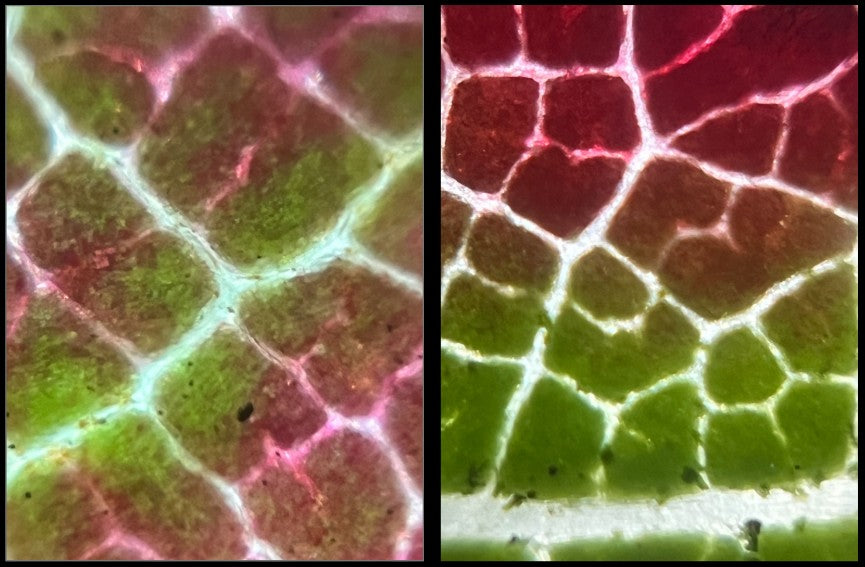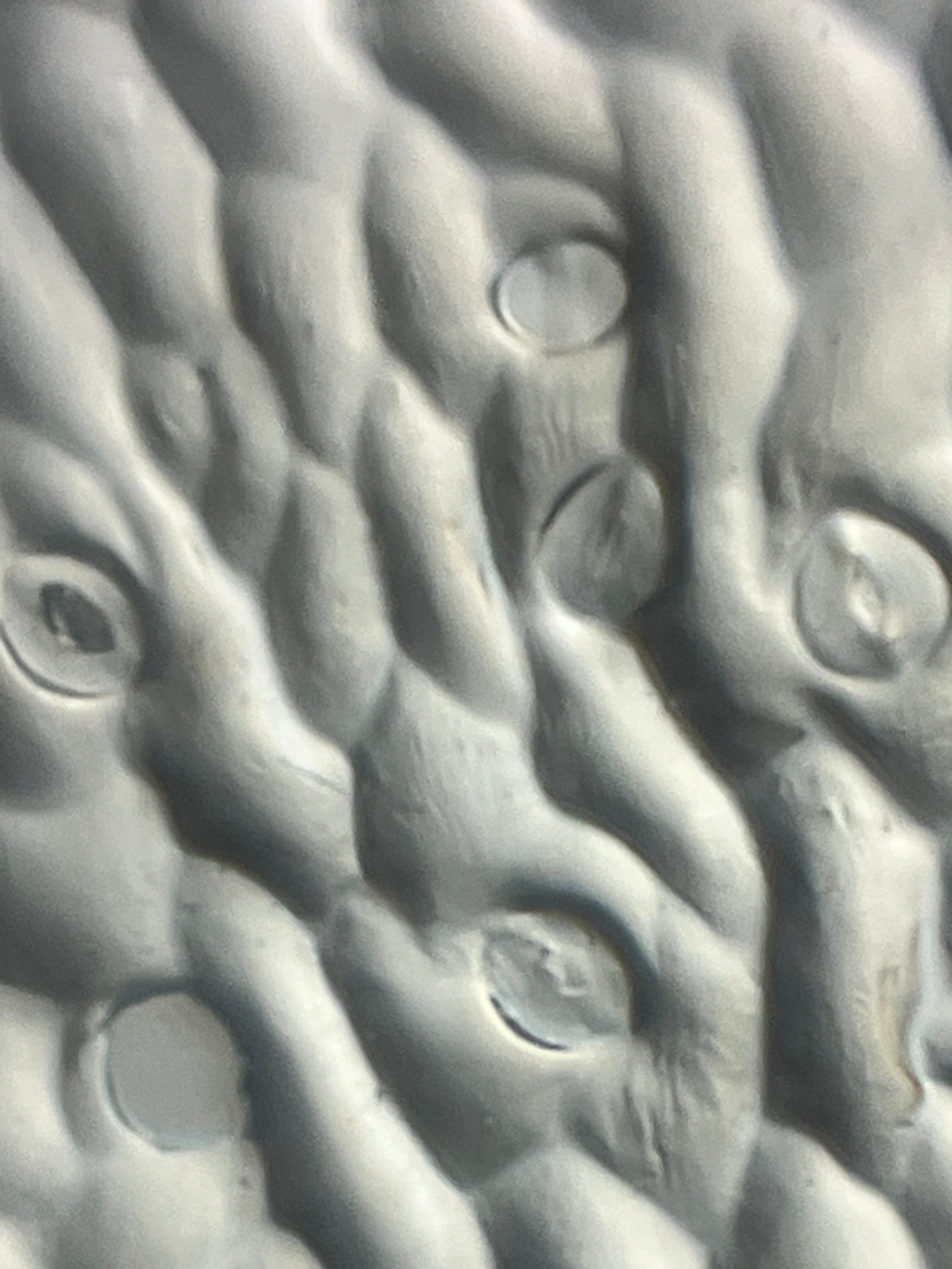During the month of June, flowers are in bloom. And when flowers bloom, pollinators visit. Some of these pollinators are and require a Foldscope 2.0 to truly see them. Read on to find out what I saw!

Figure 1. Picture of a field of flowers
(Photo Credit: Holly A. Stuart)
Big Pollinators
A pollinator can be anything that spreads pollen from one flower to another. This can include wind, water, gravity, and animals. Bees and butterflies are commonly associated with pollination because they are big, colorful, and easy to see.

Figure 2. Picture of a bee on a green bean flower
(Photo Credit: Holly A. Stuart)
Tiny Pollinators
While it is enjoyable to watch butterflies flapping their colorful wings and listen to bees buzzing about, I invite you to slow down and look closely at the smaller insects visiting your flowers. It may take a while to see them, because at first glance they look like specks of dirt, but they are there! The picture below has a few thrips (tiny insects) on the flower petal - can you see them?

Figure 3. Picture of thrips on the flower petals of a Brazilian jasmine flower
(Photo Credit: Holly A. Stuart)
Microscopic View
I found the thrips pictured below when I was studying the pollen grains of hollyhock flowers with my Foldscope. The flower petals were a dark pink, so I didn’t see the thrips when I touched my clear tape to the anther of the flower! I was pleasantly surprised to see the insect as I panned around on the slide. The thing that really surprised me was how small the thrip was compared to the size of the pollen grains.

Figure 4. Picture of thrip and hollyhock pollen viewed under a Foldscope 2.0 at 50X magnification plus 5X digital zoom on phone using a lightbox for lighting
(Photo Credit: Holly A. Stuart)
As I studied other flowers in my garden with my Foldscope 2.0, I was surprised to find thrips inside many of them. I found them in hollyhocks, Brazilian jasmine, chives, and chamomiles, just to name a few. These flowers are not right next to each other in my garden, in fact, they are each in separate garden beds. These observations increased my appreciation for the invisible world that surrounds us. They also made me wonder, what else have I missed by not slowing down and closely observing the microscopic world that exists within the macroscopic one?

Figure 5. Picture of a thrip found on a chive flower viewed under a Foldscope 2.0 at 140X plus 5X digital zoom on phone
(Photo Credit: Holly A. Stuart)
Have you looked at any tiny pollinators under a Foldscope 2.0? Use your Foldscope to dive into the microscopic world and find the beauty that is there waiting for you. Share your microscopic images and thoughts on the Microcosmos. Be sure to tag us on social media when you post the results of your explorations, creations, and discoveries! We love to see how Foldscopers around the world are using their Foldscopes in new and innovative ways!
Facebook: @Foldscope
Instagram: @teamfoldscope
Blue Sky: @teamfoldscope.bsky.social
TikTok: @foldscope
Threads: @teamfoldscope
Twitter: @TeamFoldscope
Sources:
https://www.amentsoc.org/insects/fact-files/orders/thysanoptera.html



